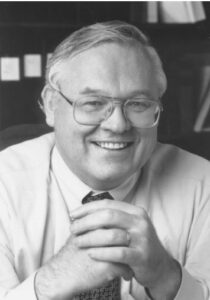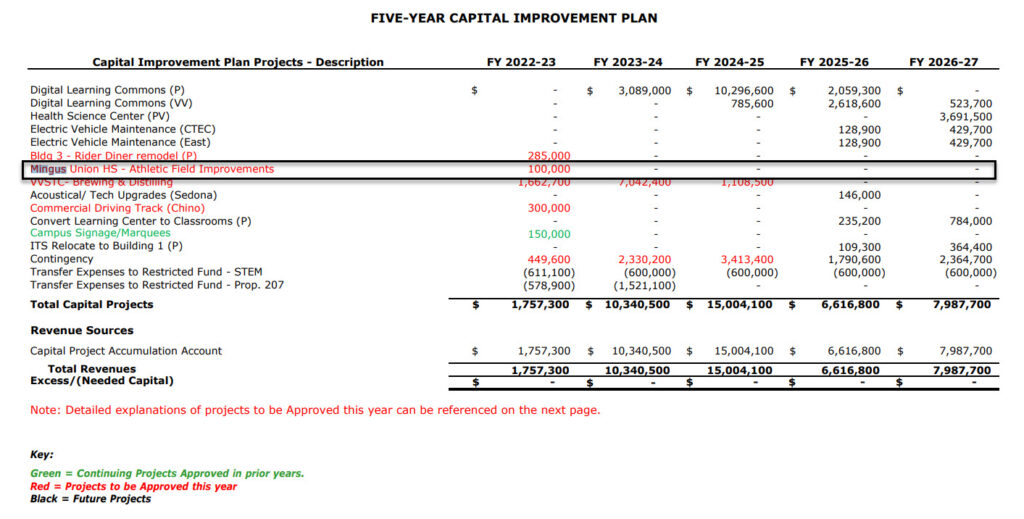Most opportunities for sponsorship of the September Tournament to support student athletes already sold out
The Yavapai Community College Foundation September Golf Class tournament is off to a great start. The event, which is scheduled for September 25, already has most of its sponsorship opportunities sold out. The event will be held at the Antelope Hills golf course in Prescott.
All of the proceeds will go directly to the student athletic scholarship program.


 Cottonwood Community Schools are moving creatively, with minimal
Cottonwood Community Schools are moving creatively, with minimal financial support, to try and deal with the high school drop out rate in the Verde Valley in a variety of ways. Experts, speaking to the Yavapai Community College Governing Board, put the high school drop out rate at from 20 to 25 percent.
financial support, to try and deal with the high school drop out rate in the Verde Valley in a variety of ways. Experts, speaking to the Yavapai Community College Governing Board, put the high school drop out rate at from 20 to 25 percent.  In its accelerated program, which may attract highly skilled learners, it is hoped they will select a major in their early high school years at the Verde Tech High School and take enough college level courses during high school so they can graduate with an Associate in Arts Degree and a High School Diploma.
In its accelerated program, which may attract highly skilled learners, it is hoped they will select a major in their early high school years at the Verde Tech High School and take enough college level courses during high school so they can graduate with an Associate in Arts Degree and a High School Diploma.  The Cottonwood Community School, with the support of the Verde Campus faculty and administrators of Yavapai Community College, has launched an aggressive effort to reduce the outrageously high number of students failing to complete high school in the Cottonwood area. According to the experts who addressed the Yavapai Community College District Governing Board in May 2022, from 20 to 25% of students living in the Cottonwood area drop out of high school.
The Cottonwood Community School, with the support of the Verde Campus faculty and administrators of Yavapai Community College, has launched an aggressive effort to reduce the outrageously high number of students failing to complete high school in the Cottonwood area. According to the experts who addressed the Yavapai Community College District Governing Board in May 2022, from 20 to 25% of students living in the Cottonwood area drop out of high school.
 The instructors hope to expand the program by the fall 2022 to include the following additional classes: Art, CNC, Fire Science, Allied Health, and Biology.
The instructors hope to expand the program by the fall 2022 to include the following additional classes: Art, CNC, Fire Science, Allied Health, and Biology.  The District Governing Board of Coconino Community College called an election that was held on May 17, 2022 to request voter authorization to reset the primary property tax rate for the College to 0.7419 cents per $100 of limited property value. The voters approved the measure by a large margin. The action was taken to change the percentage of property taxes to support the college, which was the lowest offered to any community college district in the state of Arizona until this vote.
The District Governing Board of Coconino Community College called an election that was held on May 17, 2022 to request voter authorization to reset the primary property tax rate for the College to 0.7419 cents per $100 of limited property value. The voters approved the measure by a large margin. The action was taken to change the percentage of property taxes to support the college, which was the lowest offered to any community college district in the state of Arizona until this vote. It is well known among most close observers of Yavapai Community College that its relationship with the town of Camp Verde has been less than ideal. Dr. Tina Redd reflected on some of the problems she faced that involved Camp Verde during her short term as Dean of the Sedona Center/Verde Campus. In her resignation letter to President Dr. Lisa Rhine She wrote:
It is well known among most close observers of Yavapai Community College that its relationship with the town of Camp Verde has been less than ideal. Dr. Tina Redd reflected on some of the problems she faced that involved Camp Verde during her short term as Dean of the Sedona Center/Verde Campus. In her resignation letter to President Dr. Lisa Rhine She wrote: appears, to improve it. For example, at the May 2022 meeting of the Yavapai College District Governing Board, the College administration announced it was seeking a $600,000 grant from the federal governing to fund the purchase of trucks with some of them going to Camp Verde, apparently for a truck driving school. No decision on this request will be made in Washington apparently until spring, 2023. Moreover, the College has not made public plans for a truck driving school in Camp Verde.
appears, to improve it. For example, at the May 2022 meeting of the Yavapai College District Governing Board, the College administration announced it was seeking a $600,000 grant from the federal governing to fund the purchase of trucks with some of them going to Camp Verde, apparently for a truck driving school. No decision on this request will be made in Washington apparently until spring, 2023. Moreover, the College has not made public plans for a truck driving school in Camp Verde. The effort to operate a Café/restaurant on the Verde Campus has a checkered history of starts, stops and closings. When it reopens this year, most likely for fall semester, it will try something different.
The effort to operate a Café/restaurant on the Verde Campus has a checkered history of starts, stops and closings. When it reopens this year, most likely for fall semester, it will try something different. 

 In a June 15 press release, Yavapai Community College announced that it was expanding student tuition free opportunities via a program it calls “Workforce Promise.” The new program expands free tuition to eligible students studying in many more areas than it did when it first began offering free tuition in its “YC Promise” program back in 2017.
In a June 15 press release, Yavapai Community College announced that it was expanding student tuition free opportunities via a program it calls “Workforce Promise.” The new program expands free tuition to eligible students studying in many more areas than it did when it first began offering free tuition in its “YC Promise” program back in 2017.